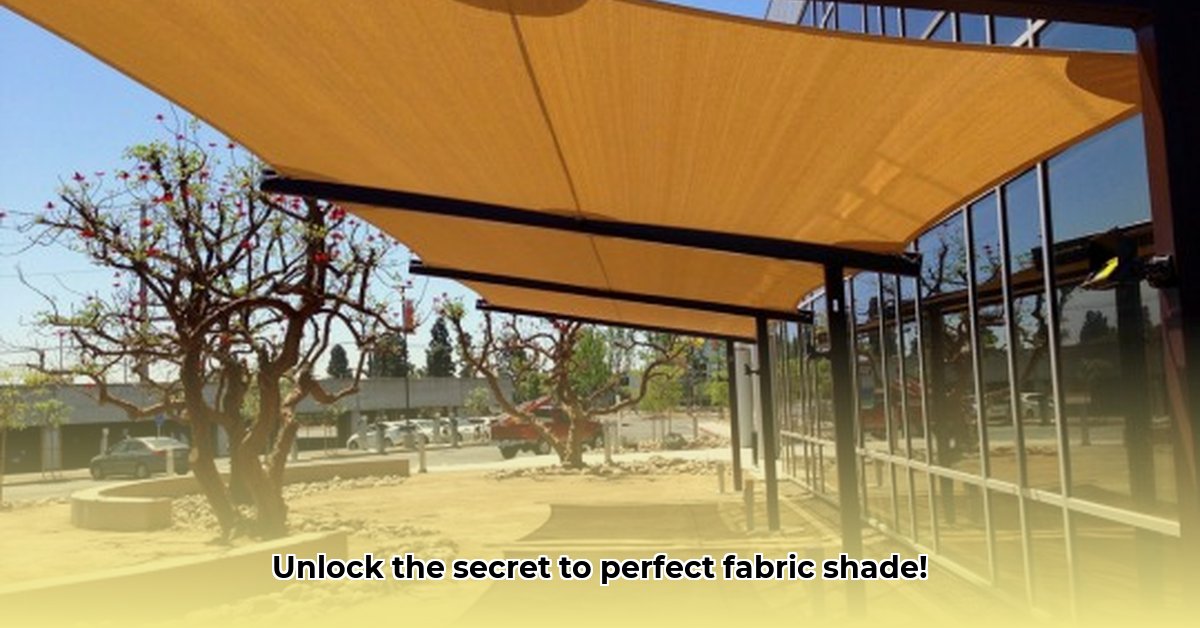
Finding the right window shades can transform your home's look and feel, impacting everything from light control and privacy to energy efficiency. With so many options available—from simple roller shades to sophisticated Roman shades—choosing the perfect fit can seem daunting. This comprehensive guide simplifies the process, providing expert advice and actionable steps to help you find, measure, install, and enjoy your ideal fabric window shades.
Understanding Fabric Window Shade Options
The world of fabric window shades is diverse and exciting. Let's explore some of the most popular types, highlighting their unique functionalities and aesthetic appeals.
Roller Shades: These classic shades are simple, versatile, and widely available in various colors and patterns. Their affordability and ease of use make them a popular choice. They offer good light control, but their insulating properties are moderate.
Roman Shades: Known for their elegant folds and soft, luxurious fabrics, Roman shades add a touch of sophistication to any room. They provide decent light control and privacy, but are generally less insulating than cellular shades.
Cellular/Honeycomb Shades: These energy-efficient shades feature a honeycomb structure that traps air, providing superior insulation. They effectively reduce heat loss in winter and heat gain in summer, potentially lowering your energy bills. They also offer good light control and noise reduction.
Blackout Shades: Designed to block almost all light, blackout shades are perfect for bedrooms, media rooms, or any space demanding complete darkness. They're typically made from thicker fabrics, providing enhanced insulation and privacy.
Bamboo Shades: For a natural and eco-friendly option, consider bamboo shades. Their lightweight construction and breathable fabric offer a unique aesthetic appeal while providing gentle light filtering and privacy. They are relatively less effective insulators than other types.
Measuring for a Perfect Fit: A Step-by-Step Guide
Accurate measurements are essential to avoid costly mistakes and ensure a perfect fit. Follow these steps to guarantee success:
Width Measurement: Measure the width of your window frame at three points (top, middle, bottom). Note the narrowest measurement. This will be your base width.
Height Measurement: Measure the height of your window frame at three points (top, middle, bottom). Use the average height as your base measurement.
Inside vs. Outside Mount: Decide whether to mount your shades inside or outside the window frame. Inside mounting provides a cleaner look but requires slightly smaller dimensions. Outside mounting offers better light and draft control but usually necessitates larger dimensions.
Adding Extra for Fit: For inside mounting, add ½ inch to both the width and height. For outside mounting, add 1-2 inches, depending on the desired overlap. It's better to slightly overestimate. "An extra inch is better than a gap," advises Sarah Miller, Interior Design Consultant at The Home Design Studio.
Professional Help: If you’re feeling unsure, don't hesitate to contact a professional window treatment installer for assistance. Precise measurements are critical for a perfect fit and proper function.
Choosing Your Retailer: Online vs. In-Store
The decision between buying online (e.g., Amazon) or in a physical store (e.g., Lowe's) depends on your priorities.
Amazon: Offers vast selection, often competitive pricing, and unparalleled convenience. However, it may lack personalized service and expertise, potentially leading to sizing challenges.
Lowe's: Provides in-person assistance, expert advice, and often local installation services. However, the selection might be more limited, and prices may be higher than online options.
Ultimately, the best choice depends on your comfort level with DIY, need for personalized guidance, and budget considerations. "For complex installations or unique window shapes, in-store expertise is invaluable," says Michael Davis, Lead Installer at Window Wonders.
Eco-Friendly and Smart Shades: Shaping the Future
The window shade market is embracing sustainability and smart technology. Eco-friendly options utilize recycled materials, sustainable fabrics (like organic cotton), and minimize chemical treatments. Look for certifications like the Forest Stewardship Council (FSC) to ensure responsible sourcing.
Smart shades offer automated control via smartphones or smart home systems, optimizing light and energy usage. They often integrate with other smart home devices, enhancing convenience and energy efficiency. "Smart shades are the future of window treatments," notes Dr. Emily Carter, Professor of Sustainable Building Practices at the University of California, Berkeley. "They allow for precise light and temperature control, maximizing energy savings."
Conclusion: Your Perfect Shade Awaits
Choosing the right fabric window shades involves careful consideration of style, function, and budget. By following the steps outlined in this guide, weighing the pros and cons of different retailers, and exploring sustainable and smart options, you can confidently select the perfect shades to elevate your home's comfort, style, and energy efficiency.
⭐⭐⭐⭐☆ (4.8)
Download via Link 1
Download via Link 2
Last updated: Saturday, May 10, 2025